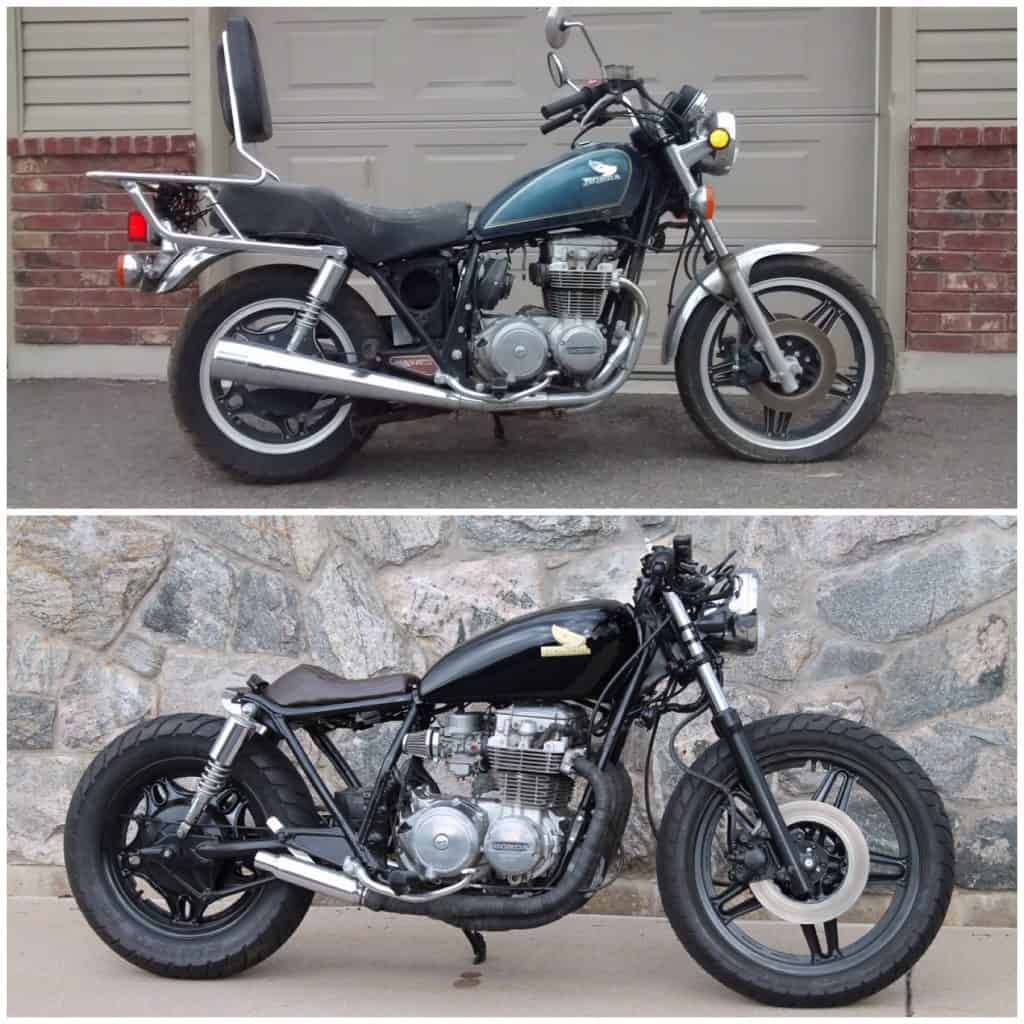
Buying a motorcycle, fixing it up, and selling it for a profit may seem like a daunting task. Many wonder if it’s possible and if it’s even worth their time. Too many times I’ve seen individuals get pumped up about enduring such a hobby only to find that they’ve become overwhelmed and given up because they simply didn’t take the right steps.
I can assure you that it is completely possible to flip motorcycles for a profit and I am living proof of that. When I was going to college, I flipped about a dozen motorcycles to help pay for my college education. With zero previous experience. I can tell you the exact steps I took in the flipping process that will help with your success.
At the end of this article, I have a few pictures of motorcycles I have flipped and sold for a profit. I have details about how much it cost to fix them up and how much I sold them for.
Disclaimer: before you start thinking about flipping motorcycles for a profit, you will need to understand the legality of it. Each state has a certain number of vehicles individuals are allowed to sell within a twelve month period, so be sure to check with your state’s laws first. Each motorcycle you flip will need to be registered and titled under your name. See my other article here to learn more about the legality of flipping motorcycles.
Step 1: Understand Your Skills
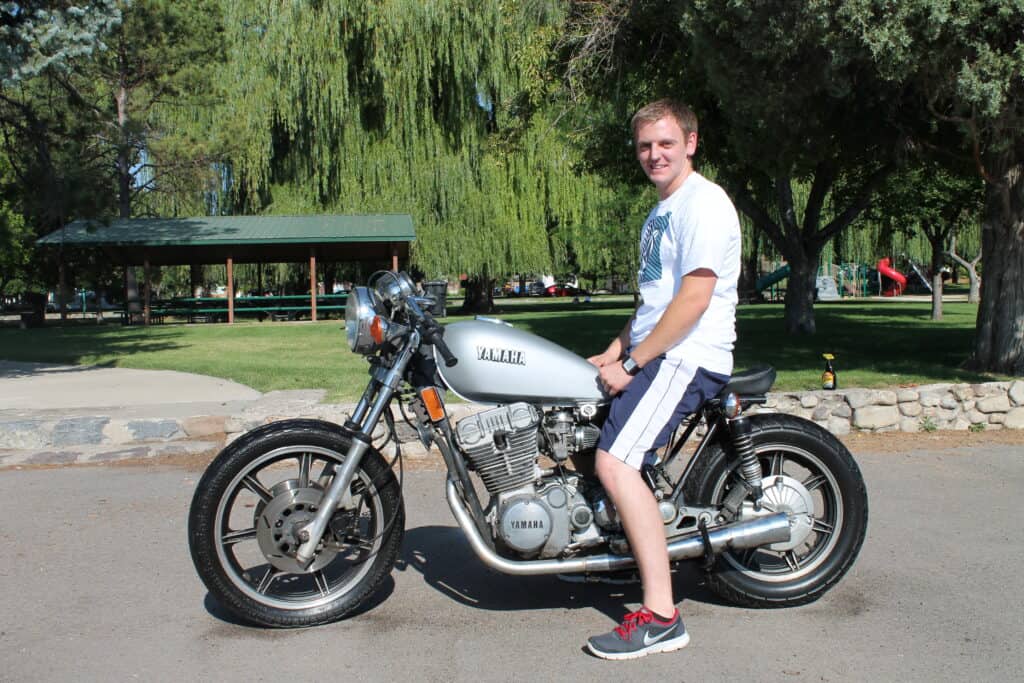
Before you start an endeavor like flipping a motorcycle, the very first thing you need to do is assess your skills and what you are and are not capable of fixing and doing to a motorcycle (and also willing to do).
I was a complete amateur during my first motorcycle restoration which was a 1980 Yamaha XS 850 (pictured above). I learned how to ride on that motorcycle and I fixed it up to a style that I loved. I didn’t initially buy it with the intention to sell it, but money was tight because I was a poor college student and I needed some cash. I spent about $1,100 total with the motorcycle purchase and fixes. I ended up selling it for $2,000. That was a $900 profit.
$900 as a college student might as well have been a million dollars. I began to be curious about the possibility of flipping motorcycles more so I could help fund my college education and in the long run it ended up working out great.
My skill set wasn’t great because I didn’t know much about motorcycles, but I learned as I went. So when you’re thinking about buying a motorcycle, fixing it up, and selling it for a profit, you need to understand your skill set and what you are willing to learn. This isn’t an impossible task if you don’t know much about motorcycles, it’ll just take you longer to complete your project.
Step 2: Understand Your Budget
In order to flip a motorcycle, you will need to have a little money in the first place to purchase the motorcycle and buy a few parts to fix it up. So it is essential you are aware of your budget, how much you can spend in purchasing a motorcycle initially, and how much you can spend fixing it up.
Too often I’ve seen people get in to their project only to find the motorcycle they’re working on needs parts they can’t afford and they simply give up.
To get an idea of how much you’ll need to spend, look online at how much motorcycles are. The price of motorcycles greatly depends on the time of year as well as the area in which you live. Motorcycles will be much cheaper when bought during the winter months. See my article here that discusses why winter is the best time to buy a motorcycle.
If you find a motorcycle you’re interested in, do a general Google search of parts to get an idea of how expensive the parts will be. Japanese motorcycles will have cheaper parts, whereas European bikes will have more expensive parts.
Plan on an extra few hundred dollars for unexpected fixes. Unplanned repairs will happen because it’s impossible to know exactly what is going on with every single part of the motorcycle you’ll end up buying.
Once you have an idea of how much the motorcycles will cost, price out how much basic fixes on a motorcycle will be such as new headlights, new handlebars, paint, new tires, etc. Click here to see what I use to upgrade and restore my motorcycles.
Step 3: Make Your Work Space Available
Finding a place to work on your motorcycle project is an important step and is actually something that a lot of people forget to do. People get excited about the idea and assume that working on a motorcycle doesn’t require a lot of space. Though fixing up a motorcycle doesn’t require as much space as a car, you still need more space than you think.
Make sure you have a place to work on your motorcycle that is inside such as a garage or shed. I didn’t have a garage during some of my college years, so I used a friend’s shed in his backyard to restore motorcycles. It wasn’t the most ideal place, but it worked and I ended up restoring and flipping four motorcycles in there.
Make sure you have enough space to work around the motorcycle and that there’s enough space to move the motorcycle around a little, too. Having too small of space to work in can make you feel cramped and overwhelmed which decreases your chances of finishing your project.
Step 4: Find A Motorcycle To Flip
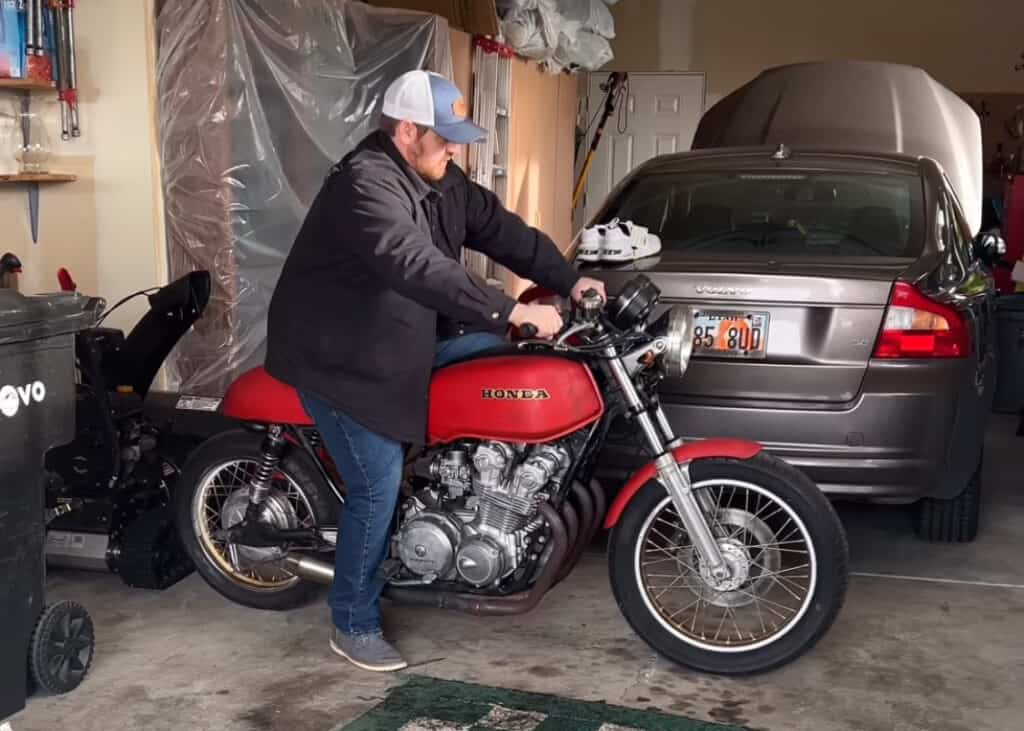
In my experience, I have found that flipping older Japanese motorcycles has worked well and has made me a lot of money. They are easier to work on, they’re easy to find, and they’re less expensive than other motorcycles out there. You can see a list I made of the best beginner motorcycles to restore by clicking here.
Now that you have an understanding of what your budget is, start looking around online, on local classifieds, and for motorcycles posted for sale in driveways or on the street. It’s easy to get emotional in this process and want to buy the first few motorcycles you look at. If your goal is to ultimately sell the motorcycle for profit, the purchase should be all about logic with no emotions attached.
The first few motorcycles I restored and sold for a profit were motorcycles that had engines in good working order; at first I always made sure the motorcycle ran. As my skill set increased with each motorcycle, I later started buying motorcycles that didn’t run and I ended up making more money off of it though it did take me more time to fix.
Don’t be afraid to ask the seller a lot of questions. You’ll want to know as much about the motorcycle as possible if you’re going to be fixing it up. The more you know, the more you’ll understand how much work is required to get it to a point where you can sell it for a profit. And that also gives you more information to tell to whoever ends up buying the motorcycle from you.
If possible, wait 24 hours before buying a motorcycle after you’ve looked at it. Waiting before buying will give you time to price out the needed fixes and let you do research about how much that motorcycle sells for in good condition.
As a rule of thumb, make sure to always buy a motorcycle that has a title. Buying an untitled motorcycle is risky because it could mean you’re buying a motorcycle that still has a lien on it or buying a motorcycle that is stolen. Click here to see my article about additional things to look for when buying a project motorcycle.
Keep in mind that most used motorcycles will probably not come with the owner’s manual. If you don’t have one, I highly recommend using emanualonline.com where you can access an affordable copy for your specific manual quickly and easily.
Step 5: Purchase Needed Replacement Parts
Once you have the motorcycle purchased and in your possession, take a day or two to make a list of what is needed to be done to make it the way you want in order to sell.
Once you have made a list of parts, order them according to your time and budget. Some of my motorcycle flips took me a few months because I simply didn’t have the time needed to get it done quick; that’s mostly because I was a full-time college student.
If you know it’ll take you a while to complete your project, buy the parts you need when you need them. It’s best to not buy a bunch of parts altogether and have them gather dust in the corner; that also risks them getting lost or damaged.
To make your project runs much smoother, make a “to-do” list of what needs to be done and when. This will help you be much more organized and become less overwhelmed. Work on one project at a time. I’ve compiled a list of additional helpful motorcycle restoration tips, you can see that by clicking here.
Step 6: Make Sure It’s In Good Running Condition
Once you’ve gotten all the parts you need, make all the necessary fixes to make the motorcycle run well. If you’re wanting a large profit off of your motorcycle flip, you’ll need to make sure you sell something that’s actually worth what you want from it.
I’ve seen a few people make beautiful cosmetic changes to motorcycles but didn’t pay much attention to the working order it was in. They didn’t have any luck selling the motorcycle and wondered why. Yes, people want to buy a beautiful looking motorcycle, but they also want it to work well so they can drive it around and show it off.
Don’t be afraid to use a mechanic if needed. Even with my large skill set now, I still use a mechanic to do occasional fixes on my motorcycle restorations. Some things are out of an amateur’s realm and some of us simply don’t have the tools needed to make certain repairs.
Step 7: Clean Up The Motorcycle
If you’re wanting to flip a motorcycle for profit, one of the most important steps you don’t want to skip is cleaning up the motorcycle. The way the motorcycle looks is what catches people’s attention in the first place.
After you’ve made the necessary fixes to the motorcycle to make it in good working order, you’ll need to work on cosmetics. Not only should you wash and detail the motorcycle, but you should also do some touch ups with paint.
I repainted the gas tank with almost all of the motorcycles I flipped. That was mostly because the motorcycles I purchased had chipped paint on the tank or there were dents that needed to be fixed. If the tank on your motorcycle doesn’t have those, you don’t need to repaint it if you feel the color is suitable.
If you do repaint the tank, I recommend you do the painting at the beginning of this process and not mount it on the motorcycle until all your fixes are done. Click here to see an article I wrote about the best paint to use on a motorcycle gas tank.
If needed, do other cosmetic touch ups such as chipped paint on the frame or fenders if you didn’t already paint those. Make it as presentable and clean as possible to get more people to come and look at it. A clean motorcycle shows potential buyers that you’ve taken good care of it.
Step 8: Post It For Sale

Next comes the exciting and most exhausting part of the motorcycle flipping process: selling it. There is a science to selling a motorcycle so it’s important you do it right if you want to make a profit off of this.
First, make sure you post your motorcycle for sale on as many platforms as possible. This should include social media, cycletrader.com, online and paper classifieds, and displaying your motorcycle in heavily populated areas. You want as much exposure to your motorcycle as possible.
When you post your motorcycle for sale, make sure you give as much information about it as you can in the description. I have found that long and detailed descriptions attracts more potential buyers because they feel a sense of full disclosure which makes you look more trust-worthy.
Post your motorcycle at a price a little higher than what you expect to get out of it. I have pictured above a screenshot from when I sold my first 1980 Yamaha. I posted it for $2,400 and sold it for $2,000. Most people will try to negotiate a price with you and being negotiable is important in the selling process.
Be sure to promptly answer any emails, texts, or phone calls you get from unknown numbers. You’ll probably get a few scammers contacting you, but in my experience they usually do it through text or email and it’s pretty easy to tell when it’s not legitimate (overseas, lots of misspelled words, wants to send you money via venmo, etc.)
If you’re asking for a lot for your motorcycle, it will take longer for it to sell. That’s not saying that you shouldn’t ask for a lot if you feel it’s worth that, just know that people who spend more take longer to come around. You will run into flakes. A lot of people may seem interested only to never speak to you again after they’ve taken a joy ride on your snazzy looking bike.
You’ll also get a lot of people who will try to low-ball you on the price. It’s good to negotiate, but be firm on the amount you know it’s worth. It’s easy to get desperate and want to sell the bike for some profit, but if you’re patient and wait for the right buyer you’ll be able to get more profit.
Real Examples Of Motorcycles That Have Been Flipped
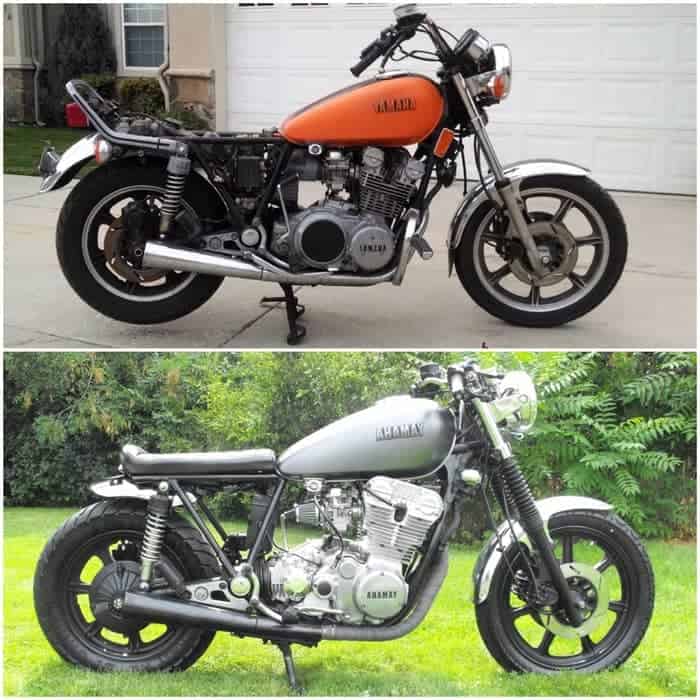
The picture above is a before and after of my second 1980 Yamaha XS850 that I restored and sold back in 2014. With the purchase of the motorcycle and all the parts, the combined price I paid altogether was about $1,000 (the engine wasn’t running). Since I restored it during the summer and flipping motorcycles was my self-made summer job in between semesters, I had it completely finished after three weeks and sold it for $4,000. I made a $3,000 profit.
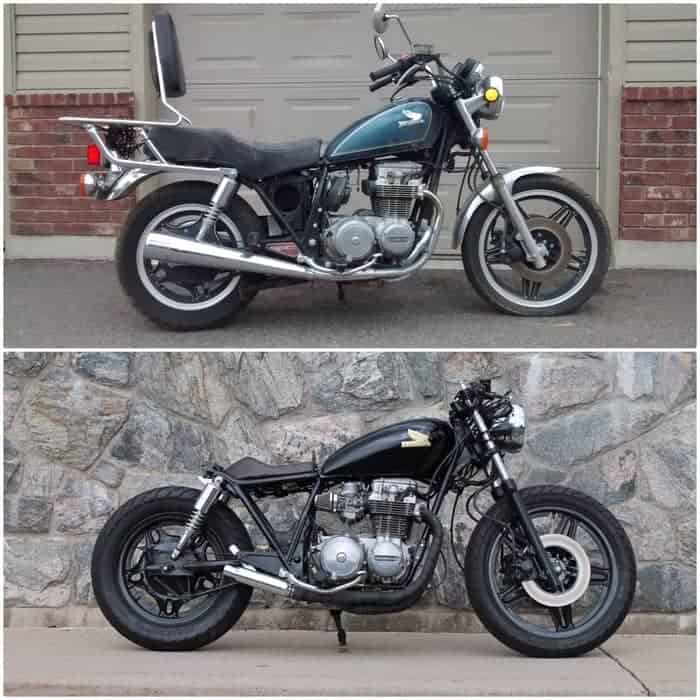
The picture above is a before and after of a 1981 Honda CB650 restoration I did in 2015. With the purchase of the motorcycle plus parts, I paid a total of $900 and sold it for $4,000. That was a $3,100 profit.
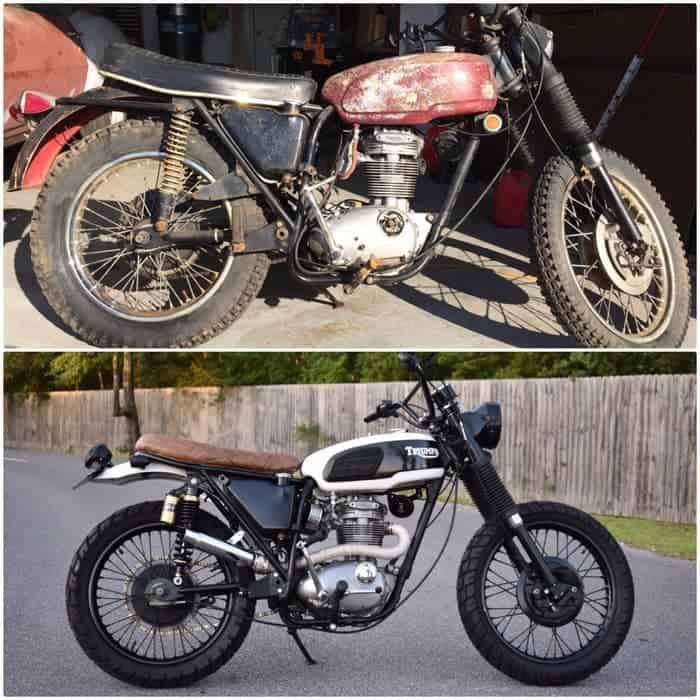
Pictured above was my toughest restoration. This is a before and after of a 1969 TR25W Trophy that I restored. I ended up keeping this one for a few years because I loved it so much. With the purchase of the motorcycle plus parts to repair it was about $1,800. I recently sold it for $5,000. That was a $3,200 profit.
Conclusion
Flipping motorcycles for a profit is an exciting, challenging, and rewarding experience. I started this journey with literally zero experience with motorcycles and later started a motorcycle restoration business. Knowing what you’re willing to fix and being aware of your budget is vital in this process. If I can start something like this, then you certainly can too! Feel free to contact me with any questions you have, I’m happy to answer!

